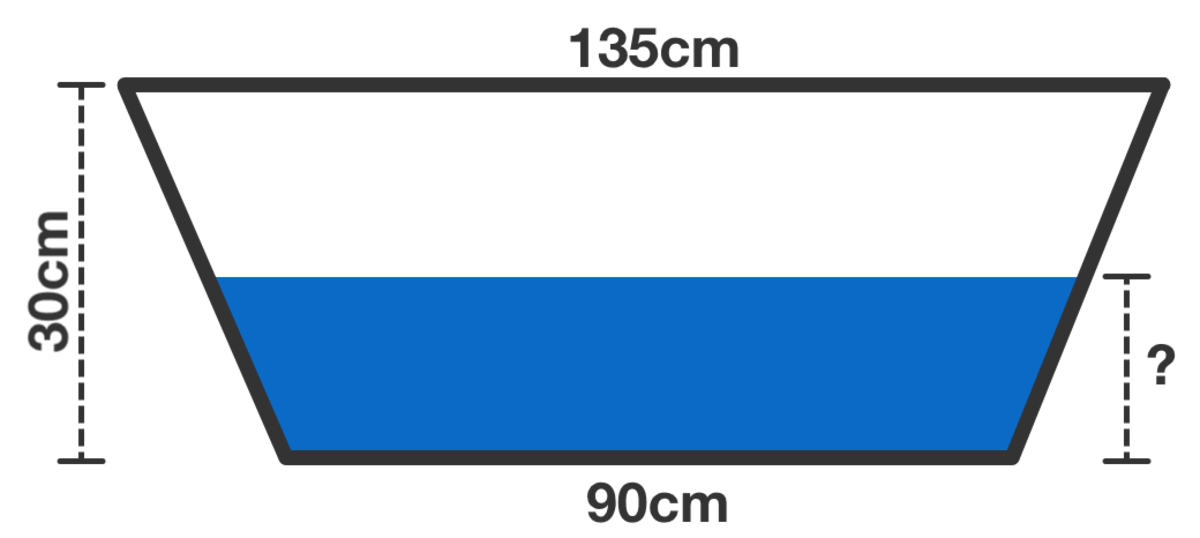Trapezoidal Tank
1 1 8 8 cm 3 of water is poured into a trapezoidal tank with a top width of 1 3 5 cm , a base width of 9 0 cm , a height of 3 0 cm , and a breadth of 1 cm .
What height, in cm , does the water come to?

The answer is 12.
This section requires Javascript.
You are seeing this because something didn't load right. We suggest you, (a) try
refreshing the page, (b) enabling javascript if it is disabled on your browser and,
finally, (c)
loading the
non-javascript version of this page
. We're sorry about the hassle.
2 solutions
The water can be separated into two parts: a rectangle 9 0 by h , and two halves of a triangle with a height:width ratio of 3 0 : 4 5 , and height h . This means the width of the triangle is 3 0 4 5 × h .
From this, we can get the equation for the total volume of water: 9 0 h + 3 0 4 5 × h × 2 h = 1 1 8 8 .
This can be rearranged to 4 3 h 2 + 9 0 h = 1 1 8 8 , and with this, we can complete the square to find h :
h 2 + 1 2 0 h = 1 5 8 4
h 2 + 1 2 0 h + 6 0 2 = 1 5 8 4 + 3 6 0 0 = 5 1 8 4
( h + 6 0 ) 2 = 5 1 8 4
h + 6 0 = 7 2
h = 1 2 .
Let the height of the water be h cm and the width of the water surface be w cm. The the volume of water in the trapezoidal tank V = 2 ( w + 9 0 ) h × 1 . And we note that w = 3 0 1 3 5 − 9 0 h + 9 0 = 2 3 h + 9 0 . Then, we have:
V ⟹ 4 3 h 2 + 3 6 0 h h 2 + 1 2 0 h − 1 5 8 4 ( h − 1 2 ) ( h + 1 3 2 ) ⟹ h = 2 ( w + 9 0 ) h = 2 2 3 h 2 + 1 8 0 h = 1 1 8 8 = 0 = 0 = 1 2 Putting V = 1 1 8 8 Note that h > 0